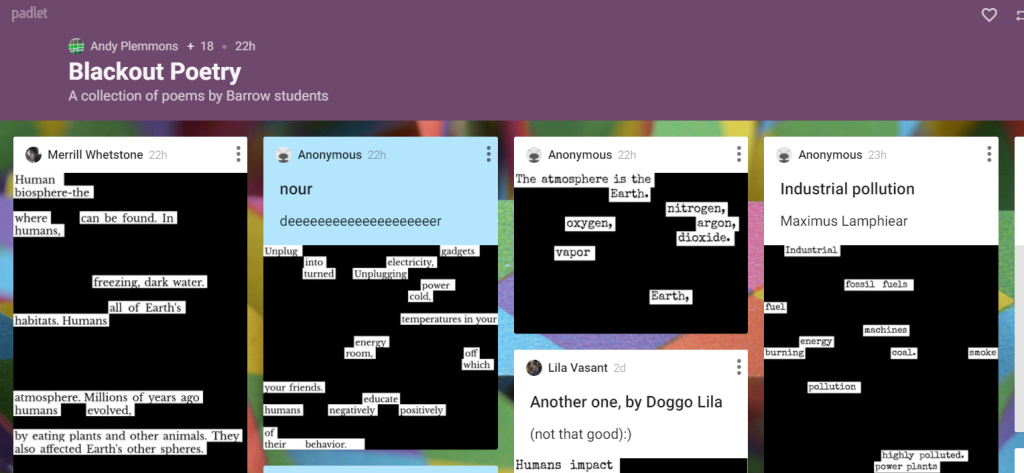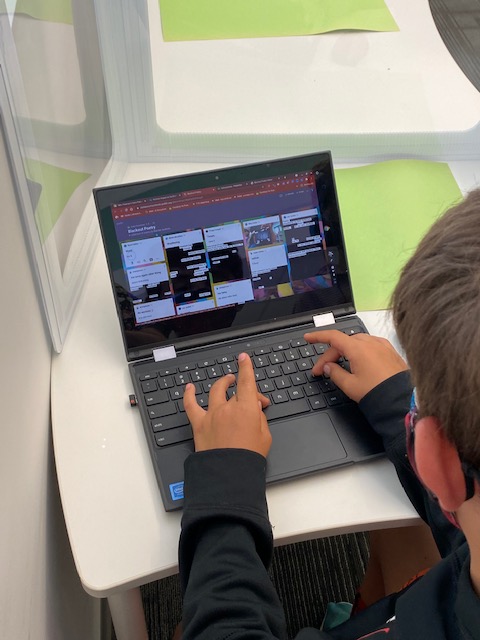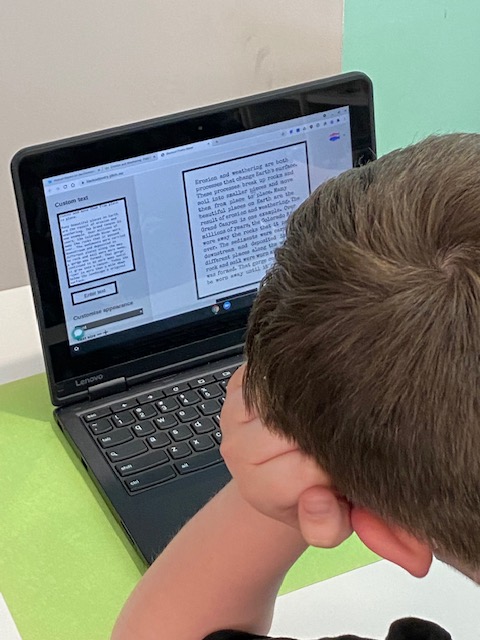April is poetry month and April 22 is Earth Day. Since our 3rd grade studies environmental standards in the 4th quarter, I decided to weave all of these things together using Wakelet, Padlet, and Capstone Connect. Currently, most of our school is attending in-person but we have one class at each grade level that is virtual. I’ve been planning lessons and projects for virtual instruction and then modifying them with activities we can also do in-person for our in-person classes. I find Wakelet one of the easiest ways to curate content in a sequential or choice-board format. I can easily share the Wakelet in Google Classroom for students to quickly access once the opening part of the lesson is complete.
Our 3rd grade standard is S3L2. Obtain, evaluate, and communicate information about the effects of pollution (air, land, and water) and humans on the environment. I decided to open our lesson with a short and powerful read aloud The Mess that We Made by Michelle Lord & Julia Blattman. This book has text that repeats and builds on each page to show how one choice environmental choice can snowball to impacts many aspects of our environment. It also has a great message of how we can be the ones to turn pollution around and save our Earth.
Once we read and discussed the book, I set the idea of recycling or reusing by talking about discarded library books. I showed books that were falling apart beyond repair and how I often tear pages from these books to save for projects during the year. I specifically chose some discarded books that featured animals or the world so that students could use the pages to create blackout poetry as a way to reuse instead of throwing away.
To setup our blackout poetry work session, we watched this short video from Austin Kleon.
Since the video offers a visual with a musical background, I could add in a few things about blackout poetry while the video was playing.

I also offered students the option of creating a digital blackout poem. This was especially helpful for our virtual students, but many of our in-person students chose this option too. We used an online poetry maker. Side note: This site was blocked in my district so I had to request that it be unblocked for this project. It has 3 texts already available to choose from so I used the Alice In Wonderland text to model making a blackout poem. My tip for students was to start with a noun and then find words along the way that described or connected with that noun. This was the poem I created in my demo.
The online generator lets you easily select the words you want, blackout the rest, render the text, and save as an image.
It even has a custom text box where you can copy and paste your own words. This is where I pulled in articles from PebbleGo via my subscription to Capstone Connect, an online hub that allows you to search by titles or standards across PebbleGo, PebbleGoNext, and Capstone Interactive Library. For our blackout poetry, I searched by our state 3rd grade science environmental standards and selected several articles from PebbleGo & PebbleGoNext that students could read and then copy and paste chunks of text into the custom text box of the poetry maker.
I also created a Padlet where students could upload their digital blackout poems or take a picture of their paper blackout poetry.
Once students finished with poetry, they could read or listen to the many interactive ebooks from Capstone Interactive library that that I included on the Wakelet. These books were also found thanks to the standards search in Capstone Connect.
To close our time, I added an exit ticket where students could share what they learned about helping the environment, what they liked about the lesson, and what didn’t really work well for them.
This lesson was a lot of fun and students were engaged the whole time. It was hard to finish it all in one session, so the classroom teachers will continue the lesson in the classroom. That’s another great thing about having everything in Wakelet. It’s a lot of resources, but it’s easy to share and continue using for future work sessions.
If you’re curious about Capstone Connect or how I have been using Wakelet to curate resources for grade level projects, I’ll be presenting a webinar on April 21 from 4:30-5:15PM CT. You can register here. Even if you can’t attend in person, you can reference the recording later. I’ll share more about this poetry project, some projects from the past couple of months, and something I’m setting up for the summer. Plus you’ll have a chance to ask some questions too.
























